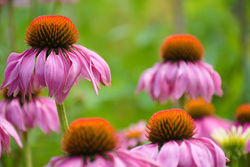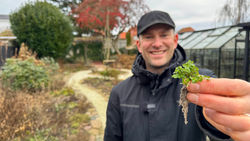Which perennials are poisonous to children?
- Lars Wildes
- Jan 26, 2023
- 3 min read
Updated: May 14, 2023
When creating a child-friendly garden, you should know what plants are safe for kids and which ones aren’t.
That’s not to say that you can’t have the plants on my list in your flower bed or garden. But I do want you to consider where you place them — keep them out of reach of tiny hands (especially toddlers) and take the time to teach your children about how to enjoy the garden safely.
7 of the most dangerous perennials for children
This list includes the most common perennial flowers that are dangerous for kids and adults.
It’s not a complete list, and if you have any doubts, drop me a line or check with your favorite local gardener to double-check.
Monkshood, wolfsbane or aconite (Aconitum napellus): All parts of this plant are toxic, containing aconitine which can cause symptoms such as tingling, numbness, vomiting, diarrhea, and even death if ingested by children.
Autumn crocus or meadow saffron (Colchicum autumnale): This plant contains colchicine, which can cause symptoms such as vomiting, diarrhea, abdominal pain, and even death if ingested by children.
Danish Arum (Arum cylindraceum): This plant contains calcium oxalate crystals which can cause symptoms such as oral irritation, drooling, vomiting, and difficulty swallowing if ingested by children.
Lily-of-the-valley (Convallaria majalis): Lily-of-the-valley contains convallatoxin and convallamarin, which can cause symptoms such as vomiting, diarrhea, heart problems, and even death if ingested by children.
Christmas rose (Helleborus niger): Christmas rose contains cardiotoxins, which can cause symptoms such as vomiting, diarrhea, heart problems, and even death if ingested by children.
Foxglove (Digitalis purpurea): Foxglove contains digitalis, which can cause symptoms such as vomiting, diarrhea, confusion, and even death if ingested by children.
Lupine (Lupinus): Lupine contains toxins, which can cause symptoms such as vomiting, diarrhea, tremors, and even death if ingested by children.

Symptoms of plant poisoning
Seek proper, immediate medical attention if you think you or your child has ingested a poisonous plant or flower.
But that won’t happen to you because you’re planting only child-friendly plants in your garden. Just in case, here are some signs and symptoms that may indicate plant poisoning:
Skin irritation or rash
Gastrointestinal symptoms (nausea, vomiting, stomach cramps, and diarrhea)
Respiratory symptoms (coughing, sneezing, and shortness of breath)
Neurological symptoms (headaches, dizziness, confusion, and loss of coordination)
Eye irritation (eye irritation, redness, and watering)
Allergic reactions (hives, swelling, and difficulty breathing)
Some types of plant poisonings won’t have immediate symptoms — some symptoms may appear hours after contact or ingestion. Other symptoms might be not specific to one type of plant poisoning, either — they can be associated with different types of poison.
It's always best to seek medical attention as soon as possible if you suspect that you or someone else has been poisoned by a plant. Bring the plant (or a sample of it) to the hospital to help identify the type of plant and provide the correct treatment.
What should you do with poisonous plants?
If you’ve just moved into a new house and taken over the garden from the previous owners (like we did), you’ll probably find dangerous plants that you don’t want around your children.
Follow these 3 steps to make your garden child-friendly in no time.
The easiest thing to do is remove the plant entirely. Be sure to include its root system (especially with a perennial).
If your child is old enough — and depending on how poisonous the plant is — discuss garden and plant safety with your child. Talk to them about the dangers and how to enjoy the garden safely.
Depending on how old your child is, move the plant to the very back of the flower bed. This keeps it from being close to the border where tiny hands can reach out and grab a leaf or flower.
Child-friendly plants to grow in your garden
Making your garden child-friendly and safe for the tiniest of us doesn't mean you have to give up color and texture.
In fact, some of the most stunning perennials and annuals are actually safe for children. Here’s a list of my favorites:
Pansies (Viola tricolor var. hortensis)
Marigolds (tagetes)
Zinnias (Zinnia)
Sunflowers (Helianthus)
Daisies (Bellis perennis)
Snapdragons (Antirrhinum)
Nasturtiums (Tropaeolum)
Petunias
Calendula
Cosmos
It’s worth mentioning that some children may have allergies or sensitivities to certain plants or flowers, regardless of the plant’s toxicity levels. It's always a good idea to be cautious and monitor children closely when they’re around plants or flowers.
If you’re uncertain about the safety of a particular plant, consult with a medical professional or a horticulturist before allowing children to be around it.
Gardening around preschoolers, toddlers, young children and even pets doesn’t have to be restricting. Instead of thinking, ‘(sigh) I can’t plant anything’, think of what you can do and how you can create a garden that looks good and is safe for people and pets.






























Comments